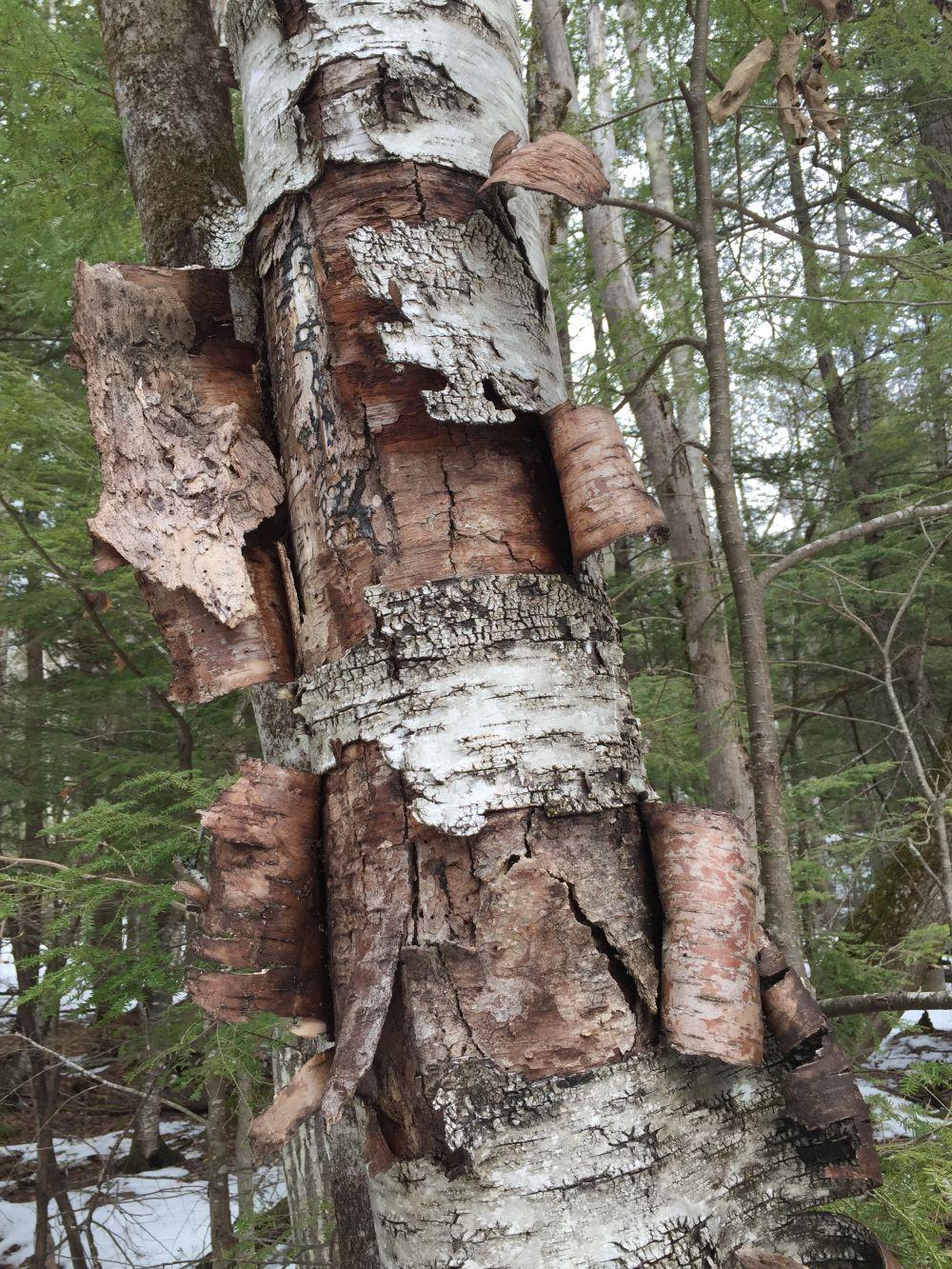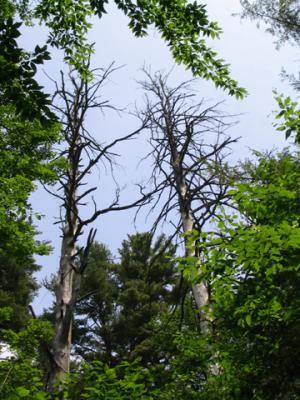The vital role snags play for NH forest wildlife
- Tags:
- Wildlife,
- Something Wild

Just because a tree is rotten, doesn't mean it isn't any good!
Standing dead trees (often called snags) are common in our forests, and it’s hard to overstate just how vital a role they play in a healthy ecosystem. These gray ghosts provide food and shelter for a whole heap of forest critters; a total of 43 species of birds and mammals are specially adapted to nesting or denning inside tree cavities.
But before a dead tree becomes a high-rise condo for a long list of species, it first undergoes a remarkable transformation. In fact, snags undergo a series of changes, from the time they begin to die until they finally collapse, and each stage of decay has particular value to a whole host of different animals with unique needs.
First things first: decaying wood is perfect for fungi -- molds, mildews and mushrooms -- decomposers that soften wood enough for insects to start to gnaw their way in.
Next, termites, beetles, and ants all begin to chew apart and break down the cellulose and lignin that gives wood its normally rigid structure.

And once you have bugs in the bark … well, then come the birds. In New Hampshire, at least 25 bird species use cavities for their homes; 10 that excavate their own holes, and another 15 that repurpose existing cavities for themselves.
Pileated Woodpeckers are a perfect example of a primary cavity excavator, as they forage on the smorgasbord of delectable insects, by way of drilling, boring, and hammering their beaks into the wood.
In addition to creating feeding galleries, woodpeckers carve out nesting holes, which in turn become a nest sites for a wide array of other birds and small mammals -- secondary cavity users, who move in and make the space their own.
Common winter feeder birds like black-capped chickadees, white-breasted nuthatches, and tufted titmice. Also most owls, and the ‘tree ducks’ -- wood ducks and hooded mergansers -- all rely on holes in trees for shelter … as do squirrels, fishers, and raccoons -- who are unable to chisel cavities themselves.

So how do otherwise healthy trees ‘give up the ghost’ in the first place?
Some trees rot slowly from the inside out after beavers flood an area, drowning their roots. Some decline slowly from insects like the Emerald Ash Borer, or from fungal diseases like White Pine Blister Rust. Others may receive a mortal wound from another falling tree, an ice storm, or even by getting zapped by lightning.
And when lightning strikes a tall white pine, the sap of the outer cambium literally boils, creating a vertical lightning scar, and the bark eventually sheds in large sheets.
That zapped sap can also act as a preservative, sealing the wood of that standing dead tree for decades and decades to come...much like treating your porch wood with varnish. Tall standing dead pines are durable ‘gray ghosts‘ that can last for decades as snags.

Conversely, the soft, punky wood of rotting paper birches are much shorter-lived habitat preferred by chickadees.
Many common resident winter birds nest early in the spring because they live inside wooden homes of standing dead snags.
Competition for the best snags for denning and nesting can be a real limiting factor out there in the woods ... and no word yet on forest “rent control” for squirrels!
